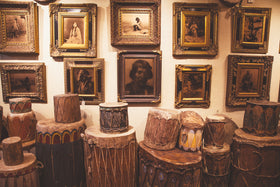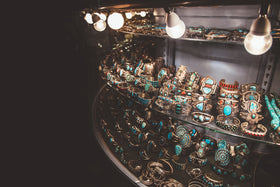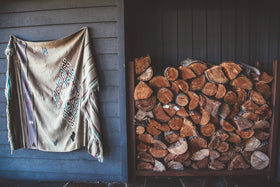Antique Weather Vanes

If you grew up in farm country, chances are you have a pretty good understanding of what a weather vane looks like. Chances are you also threw some lead at an unsuspecting tin horse or rooster. And chances are you were met with either the ting of a bullet that hit its mark or the sharp holler from your ole man (You know he did it too!) While these decorative adornments made for good targets, their actual purpose was to identify the direction of the wind. It turns out, mankind has been interested in knowing which way the wind blows for a very long time.
 While the precise origin of the weather vane is a bit of an unknown, we do know the concept developed over time. What started out as a simple piece of string or cloth attached to the tops of buildings progressed into decorative banners. The final evolution, the metal weather vane, was documented as early as the 1st Century B.C. Weather vanes eventually became a popular addition to the steeples of churches. In fact, in the 9th century, Pope Nicholas declared that all churches must display the rooster on their steeples as a symbol of Peter’s betrayal of Jesus. As time went on, the rule was discarded but the rooster stuck around. The first American weather vanes were brought over by European settlers and have since become an American tradition.
While the precise origin of the weather vane is a bit of an unknown, we do know the concept developed over time. What started out as a simple piece of string or cloth attached to the tops of buildings progressed into decorative banners. The final evolution, the metal weather vane, was documented as early as the 1st Century B.C. Weather vanes eventually became a popular addition to the steeples of churches. In fact, in the 9th century, Pope Nicholas declared that all churches must display the rooster on their steeples as a symbol of Peter’s betrayal of Jesus. As time went on, the rule was discarded but the rooster stuck around. The first American weather vanes were brought over by European settlers and have since become an American tradition.

During the 1800's, interest in weather vanes as an ornamental item increased. Every barn in sight would have had one proudly on display atop its cupola. They came in all different shapes, sizes and subject matters. Roosters, horses, pigs, cows, fish, dogs, the list goes on and on. Some were bare metal, which acquired a wonderful rusty patina over time, and others were painted every few years to protect them from the harsh weather. There were three-dimensional copper and tin weather vanes, plate glass weather vanes, and weather vanes with built in lightning rods. If you could think it, it was made. While it was convenient to have commercially-made options, many farmers, ranchers and blacksmiths took it upon themselves to craft their own. This led to custom one-of-a-kind weather vanes that, because of their over built materials, have survived to this day. Examples of handmade weather vanes are considered American folk art and are highly desirable among collectors.
 At Cisco’s Gallery, we offer a variety of weather vanes. From three-dimensional tin pigs to blacksmith-made trout, our weather vanes are authentic pieces of Americana perfect for the home or collection.
At Cisco’s Gallery, we offer a variety of weather vanes. From three-dimensional tin pigs to blacksmith-made trout, our weather vanes are authentic pieces of Americana perfect for the home or collection.




